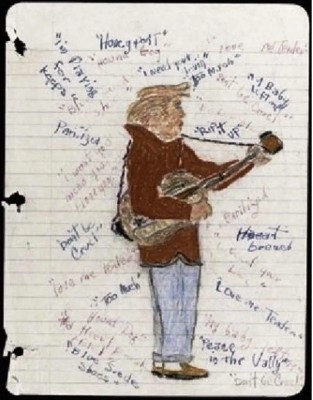Dan Brown: From Musician to Best-Selling Author of The Da Vinci Code and Angels & Demons
Before Dan Brown became a household name as the author of "The Da Vinci Code," Dan Brown was exploring a different form of storytelling: music.
In 1994, Brown released an album titled "Angels & Demons," a title he would later reuse for his 2000 novel. This early foray into the arts highlights Brown's diverse talents and his eventual pivot to writing, where he found extraordinary success.
Dan Brown's journey in the creative world began with music. Before achieving fame as a novelist, Brown tried his luck as a musician. He released several albums, with "Angels & Demons" being the most notable due to its later connection to his literary work. His music career, though not as illustrious as his writing, provided him with a foundation in narrative structure and creativity.
In the early 1990s, Brown was involved in the music scene, performing and recording. His experiences in this realm likely influenced his later work, embedding a sense of rhythm and pacing that can be seen in his thrilling novels.
Transition to Writing
After his stint in music, Brown transitioned to writing, where he found his true calling. His first novel, "Digital Fortress," was published in 1998, but it was "The Da Vinci Code" in 2003 that catapulted him to international fame. The novel became a global phenomenon, known for its intricate plot, historical references, and controversial themes.
"The Da Vinci Code" follows symbologist Robert Langdon as he uncovers secrets hidden in famous artworks and historical texts. The novel's mix of art, history, and religion captured the imagination of millions, sparking widespread interest and debate. Its success was monumental, selling over 80 million copies worldwide and being translated into 44 languages.
The novel's popularity led to a film adaptation in 2006, directed by Ron Howard and starring Tom Hanks as Robert Langdon. The movie was a box office hit, grossing over $758 million globally. Although it received mixed reviews from critics, audiences were captivated by the film's fast-paced narrative and the portrayal of the novel's iconic scenes.
Angels & Demons and Subsequent Adaptations
Following the success of "The Da Vinci Code," Brown's earlier novel "Angels & Demons" also gained significant attention. It was adapted into a film in 2009, again directed by Ron Howard and starring Tom Hanks. This prequel to "The Da Vinci Code" delves into the mysteries of the Vatican and the secretive Illuminati, offering a gripping blend of suspense and historical intrigue.
The film adaptation of "Angels & Demons" was well-received, though not as financially successful as its predecessor. It continued the trend of bringing Brown's complex narratives to the big screen, highlighting his ability to weave compelling stories that bridge fiction and historical fact.
Dan Brown continued to expand the Robert Langdon series with "The Lost Symbol," "Inferno," and "Origin," each adding new layers to the character's adventures and exploring different historical and scientific themes. These novels further cemented Brown's reputation as a master of the modern thriller.
"Inferno" was adapted into a film in 2016, again featuring Tom Hanks and directed by Ron Howard. While not as commercially successful as the earlier films, it showcased Brown's consistent appeal and the enduring interest in Langdon's exploits.
Get Free Gifts & Best Stories!
Join our newsletter to get our top stories of the month and free merch.
- 📚 Cool Stories: Read stories you won’t find in textbooks.
- 🎁 Free Gifts: Get exclusive stickers, t-shirts, and more!
Only 1 email a month. No spam, we promise!

